Pioneer in the Alberta Art Scene: An Interview with Donna Guardino
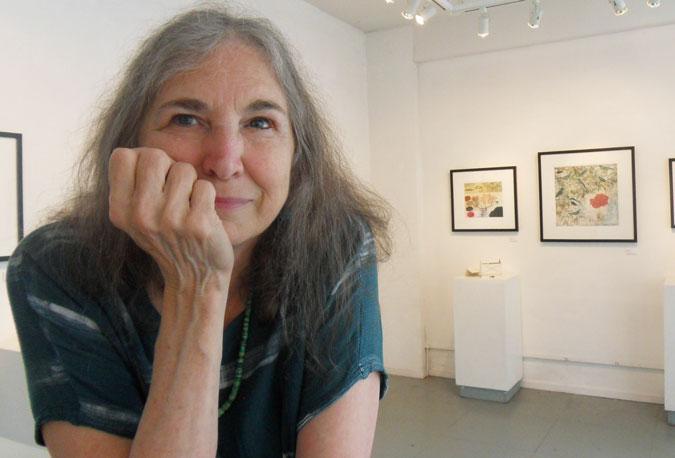
Donna Guardino’s sister once made fun of her for using a beautiful handmade cup to measure out laundry detergent. But the artist turned gallery owner firmly believes in surrounding yourself with beauty. “I actually believe that people need art,” she said on a recent Friday afternoon at her Northeast Alberta Street gallery. “I don't think people should buy for value. They should buy art because they respond to it. Something in it resonates with them.” Donna admits to cramming things of beauty in every available space. Which is only fitting for somebody who has helped educate, advise and advance the careers of hundreds of Portland artists.
Bay Area Artist
For most of her life, art has been Donna’s livelihood. She studied and experimented with many different types of media, including printmaking and painting. Eventually Donna became best known around the San Francisco Bay Area for her 3-D handmade paper constructions. She created many large commissions for the lobbies of businesses.
But Donna had her share of rejection before success. Early in her career, she desperately wanted to show in the Mill Valley Fall Arts Festival. “I just loved that festival,” she said. “It was a high quality show. I applied and I got turned down. I was devastated. My life was over.” She remembers thinking she must be a terrible artist. But the next year, the same festival asked her to be a juror. “So I could not get in a show one year, but I could be a juror the next.” This experience made her realize that things change all the time. “It woke me up to realize rejection shouldn’t stop you,” she said. “Same for waiting around thinking I was going to get discovered.” So she went after the shows and publications she wanted. And she got into many of them.
Donna learned the gallery business working with her husband Sal and a group of other people on a nonprofit co-op gallery in Sonoma. In addition to business skills, she learned to deal with many personalities. These lessons have served her well ever since.
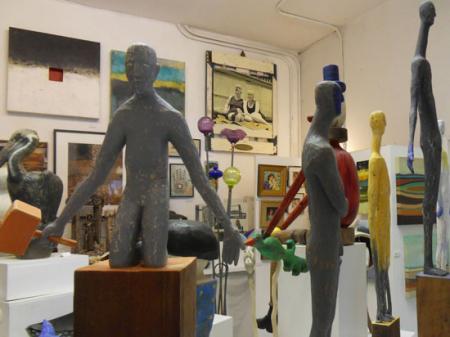
Launching Guardino Gallery
By the 1990s, Sonoma had lost some of its charms. Drugs had hit the area. “Sonoma was getting weird,” Donna said. “The kids were driving better cars than the parents.” She and Sal wanted to move their teenage son out of Sonoma and into a bigger place with more opportunity.
Donna and Sal looked north. At first they considered Seattle, but decided Oregon had a lot to offer. Donna did a two-week teaching stint with PSU’s Haystack Project. “I realized I liked it up here,” she said. They moved up to Portland after a stay in the Willamette Valley, buying a building on Northeast Alberta Street.
However, the economic situation was a lot different in Portland. Compared to prices in the Bay Area, Donna could only get one-fourth her usual amount for commissions. “We did what we could to survive,” she said. That included making art, teaching, running a frame shop and eventually plunging into gallery ownership.
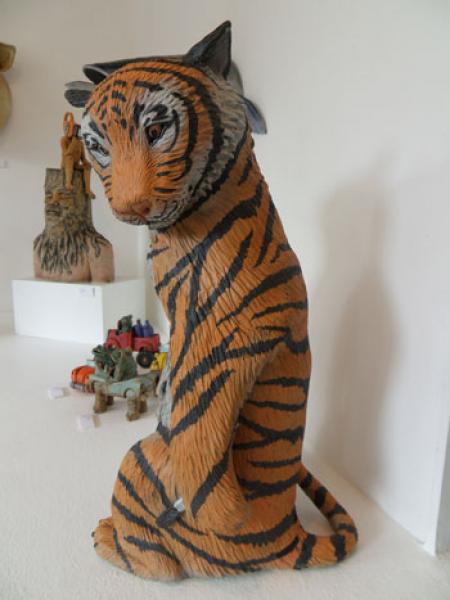
After the co-op in Sonoma, Donna was ready to run things. “If I was going to have a gallery I was going to be the benevolent dictator, period,” she said. “I really wanted to be the one who called the shots. It would be a lot easier.”
But to make a successful gallery, she realized she and other area businesses would have to improve Alberta Street. And its reputation.
Branding Alberta Street
Donna was one several people who launched Alberta Street’s first Last Thursday event in May of 1997. “I remember people calling up and saying, ‘Are we going to get shot if we come up there?’”
Alberta Street in the mid 1990s was much different from the Alberta Street Portlanders know today. It was boarded up buildings and plenty of gunfire. “Here we are faced with a street that was so boarded up that it was kind of exciting. There was nowhere else to go but up,” Donna said.
After several business associations formed and failed, the nonprofit Art on Alberta, which Donna helped form, became the de facto business and art association. They decided how to advertise and brand Alberta Street to the outside world. Small businesses banded together, focusing more on the words “Alberta Street” than on their individual products and services.
Choosing Artists
The Guardino Gallery has evolved into a favorite among Portland artists. Donna used to look at portfolios year-round, but now she does all her artist interviews in the summer. Competition is tough for space in her gallery. She usually shows three artists per month, except for her annual Heart, Little Things and Day of the Dead group shows. This means that of the hundreds of artists she meets with each year, most will be disappointed.
So what does Donna want? Portland artists often ask each other that question.
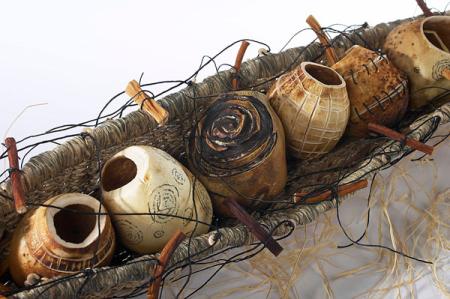
She wants art that makes her heart beat faster. She wants artists she can get along with, who are reliable and able to present themselves well.
“The first thing I tell everybody is if you’re an artist, look at the gallery and find out if you want to be there.” Surprisingly, artists try to show her their work without knowing what she usually shows.
“Second, set up an appointment. I do it differently than most galleries. I don’t trust slides so much. I want to see the work, pick it up, turn it over, talk to the artist. I want to know who they are.”
When artists come to show their work, she doesn’t want to see everything they’ve ever created. She’s interested in the direction they’re going, not where they’ve been. “A resume is not going to influence me,” she said. “Same thing with a statement. But I still want to see you’re competent enough to come up with one.”
The work needs to be saleable. For this reason, she skips most installation artists.
The gallery has several rooms -- a main gallery and a feature room, plus a gift shop and a back room with art from past shows. Two artists show together in the main room, one 2-D and one 3-D. One of Donna’s challenges is finding pairs that go together. “You can put the wrong people together and both die,” she said. “Some pairings have been brilliant and they’ve gone on to show elsewhere together.”
Certain artists don’t take rejection well. “They never talk to me again,” she said. “They don’t even show up in the gallery anymore. I can’t show everybody I like. There just isn’t enough room, enough time.”
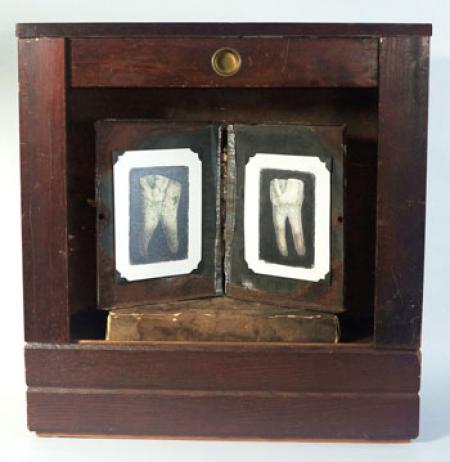
Advice for Artists
Donna meets entry level artists who think their work is as good as more established artists and, therefore, merits the same price. But if they’re new, they lack the following and track record to charge higher prices. “I have to have the price talk with them all the time,” Donna said.
The internet – particularly Etsy – has caused more pricing problems. Whatever an artist charges for art, whether in a gallery, online or at a street fair, Donna emphasizes the importance of consistent pricing. “If you post your price as being $500 on your website and you come here and charge $900, how is that person going to feel when they find out they could have bought it for less? Charge straight across the board.”
Donna’s experience jurying shows for art events has exposed her to many thousands of slides. “Your presentation is all important,” she said. “It behooves someone to learn how to take pictures. Invest in the tools it takes to shoot a picture. Learn Photoshop.” Some of her gallery artists have supplied awful photos for use on marketing postcards. “I’m supposed to use this for a card and you’re seeing the floor, wall or messy studio.”
Donna cautions artists to examine their medium and make it safer. “When you’re young, you’re invincible. But solvents and stuff can strip your body.” Depending on the media, gloves and ventilation are two possible ways to increase artist safety.
Most artists find the road to success uncomfortable. They often dislike marketing themselves or talking to strangers. “You’ve got to do it,” Donna said. “You’ve got to learn those skills.” Donna has had openings where she found the artist hiding out back.
Most of all, Donna urges artists to keep trying. Don’t get discouraged. “If you’re still doing it, you’re a success,” she said. “You’ve figured out ways to survive. Success is the last man standing.”
The Future
After Donna’s decades in the art business, you might think she’d know what would sell in her gallery. You’d be wrong. “The longer I’m in business the more I cannot predict,” she said. “Seriously. I can’t tell you what’s gong to sell or not.”
Instead, she chooses art she loves. She looks for a spark of passion in the artist and tries to gauge his or her potential. In some cases, she’s built relationships that have lasted many years. She cushions her art shows by having a shop where she sells jewelry and small goods with a lower price point.
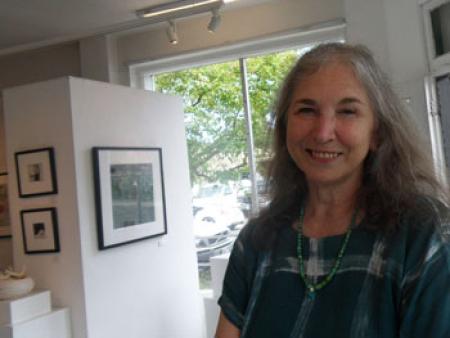
Donna plans to keep balancing her shows with 2-D and 3-D pieces. “There’s not a lot of places in Portland that show quality 3-D work,” she said. She especially loves the warmth, color, texture and variety of ceramics and wood.
Recently she’s started a series of artist talks one Saturday afternoon each month. This brings more people to the gallery. It also gives her artists a chance to practice speaking in front of groups. Plus, the public gets to meet artists, hear about different approaches to art and ask questions.
As for her personal collection, Donna said her house is pretty full. “I have a lot of art, but I’ve been alive a long time,” she said. “I don’t buy a lot anymore. There’s no wall space. I’m still tempted sometimes. And I do buy. I will cram things into every available space. I have a really crowded house.” Hence the use of art even for such mundane activities as measuring laundry soap.
Sometimes Sal talks about selling the gallery and retiring. Donna’s not having any of it. I can’t imagine retiring,” she said. “I want to do this as long as I’m standing. This is too much fun.”
For current shows and other info: http://www.guardinogallery.com/